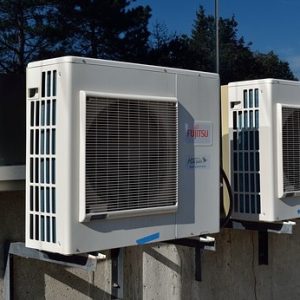One hour webinar
$50.00
This webinar reviews previous literature demonstrating the importance of ventilation in K-12 classrooms and the relationship between ventilation and student attendance and performance. Installation, commissioning, and maintenance requirements to ensure adequate ventilation to classrooms will be reviewed, with an emphasis on HVAC replacements. The presentation will include an overview of Title 24 (Part 6) ventilation compliance and acceptance testing. Lessons learned from a recent study documenting ventilation performance after HVAC replacements will be highlighted to document possible failure points in the HVAC replacement process. Ventilation technologies will be discussed, including energy recovery ventilation and demand control ventilation.
This training offers one AIA HSW CEU and one Build It Green CEU.
Speakers:

Theresa Pistochini is the Engineering Manager at the UC Davis Western Cooling Efficiency Center (WCEC) with 10 years of experience in applied research in energy efficiency in buildings, primarily in the areas of Heating, Ventilation, and Air Conditioning (HVAC). She led the development and construction of the WCEC’s HVAC testing laboratory in 2013. In addition to research activities, Theresa leads a project producing video training materials for the HVAC portions of Title 24 Building Energy Efficiency Standards. She provides technical management for the WCEC staff, reviewing project progress including experimental plans, analyses, results, and publications. Theresa earned her M.S. degree from UC Davis and is a registered professional mechanical engineer in California.

Dr. Rengie Chan is a Research Scientist in Indoor Environment Department of the Environmental Energy Technologies Division at Lawrence Berkeley National Laboratory. Her work focus on pollutant transport between outdoor and indoor air, and implications to human exposure as a result. There are many influential factors to consider in different environments. Dr. Chan is currently involved in three projects that study the various aspects of this topic: (1) characterization of the air leakage of U.S. residential homes, (2) indoor air quality and ventilation needs of retail buildings, and (3) integration of indoor modeling capability in hazard event assessments and predictions. Dr. Chan joined the Laboratory as a graduate student and worked on the evaluation of shelter-in-place effectiveness. She collaborated with the National Atmospheric Release Advisory Center to develop an operational model that predicts indoor concentrations in residences and commercial buildings in the event of an outdoor chemical release. Her work has been applied in advising emergency responders on protecting buildings against accidental or intentional chemical or biological releases. Dr. Chan earned her Ph.D. in Civil and Environmental Engineering from University of California, Berkeley in 2006. Prior to that, she participated in the Pittsburgh Atmospheric Particulate Matter Supersite Program led by Carnegie Mellon University, where she studied Chemical Engineering as an undergraduate. Her work involved ambient monitoring of particulate matter and gaseous pollutants. She assisted in the development of an in-situ instrument that measures the water content of fine aerosols.

